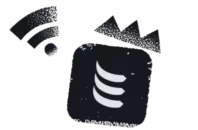A big advantage of internet telephony is that you can take your number with you if you decide to switch providers, thanks to a process known as “number porting.” Unfortunately, some VoIP companies don’t want you to end your contract and will put up resistance. But by law(in many countries), they have to let you go – and they also have to allow you to take your number with you.
In order to create a smooth transition and successful number porting experience, it’s important to be informed about the process. Knowledge is power, after all. That’s why we’ve put together this complete guide on number porting to help you navigate the process successfully.
Initial Considerations
The first step in number porting is to contact your new provider. In fact, this will likely be one of the options that you can select when you fill out an account application form online with them. However, there are also a few actions you can take with your existing provider to make sure that the process of porting your number runs as smoothly as possible.
Number Porting Blocks
For instance, make sure there isn’t a clause in your existing contract that bars you from moving your telephone number to a new provider – it might be that you got a special cheap tariff package that included that condition.
If such a clause does exist in your contract, you have three options:
- Upgrade to a higher plan without that restriction
- Pay a fine
- Give up on moving your number
Find out whether you have a get-out option that will allow you to pay your way out of the problem, either with a change in account plan or by paying a fine. It could be that switching to a new plan puts you into a new minimum contract period, which you could be fined for breaking. In this case, you would need to assess whether the move to a new VoIP provider is financially viable.
Service Areas
Not every VoIP provider has the ability to provide service to every country and area code in the world.
You’d think that the company you’re planning to move to will tell you whether or not it covers your desired areas or countries. However, you might just be dealing with a call center operative or a sales person whose goal is to increase sales numbers and who won’t want to discourage you from signing up by telling you the truth. The people you deal with initially might not even have access to information on which specific areas the company covers.
While you’re in the process of shopping around for a new VoIP provider, ask for confirmation that the company you’re considering is able to host your existing number. Get that confirmation in writing, either by email or in a letter.
The Start of the Number Porting Process
After you tell your new provider that you want to move your number from your old service, they’ll likely ask you to fill out a “letter of authorization” (LOA), which is sometimes called a “letter of agency.” Some businesses, particularly in the USA, refer to this letter as a “Responsible Organization Change Authorization” or a “RespOrg form.” Generally, they’ll provide a form for you to fill in that satisfies the requirement of this authorization letter.
The form (or letter) has to be signed in pen, and the VoIP company will need the original copy before they will proceed. Some providers might start the process on the receipt of a fax or scan of the LOA, but even then, they’ll still need the original sent to them by post.
Printed on the form will be other requirements; for example, you’ll usually need to send a bill from your existing provider along with the form. Some VoIP businesses ask for two bills from your current provider in order to start the number porting process. You might also be asked to provide proof of address and proof of identity.
Double-check that every piece of information that you wrote on the LOA is spelt correctly. Spelling errors are the most common cause of request rejections.
Authorized Contact
Take note: only the person who filled in the form to open the account can close it. If the account was opened by someone else, such as a business partner or spouse, that person will need to fill in and sign the LOA.
If you are the authorized contact on the account, make sure that you use the same name and signature that you had when you opened the account. If your name has changed because you got married, you changed it legally, or you started or stopped using a middle name, use your original name for the sake of this form. If you’ve changed your signature, sign the LOA in the old way.
If someone else opened the account, and you can’t get a hold of that person, call or email your VoIP provider to get the contact information changed on your account before filling in the LOA.
Your Account PIN
One piece of information that the losing provider might request is the PIN for your account. The receiving company won’t always request this information, but it’s still a good idea to have it to hand in case the issue arises. You might not know your PIN. You might not even realize that there is one. However, there is, and you need to find it – particularly in the case of wireless numbers.
If you don’t know your PIN, phone the customer helpline for your current provider and ask for it. They might insist on sending it to you by post. This may create a delay in your application, which is why it’s better to have your PIN on hand before you start the number porting process.
Number Porting Complications

Laws and regulations vary by country, so the rules that you’ll need to follow will be influenced by the countries where your current and future VoIP providers are located. That said, your receiving VoIP company is unlikely to put up any barriers, so it’s the location of your soon-to-be-ex telephone company that matters most.
Another influencing factor is the country of the number that you want to port. However, in all of these cases, the receiving VoIP provider should be aware of the different requirements and should be able to advise you accordingly.
Complications are likely to arise if you have any service orders on your number. These include paid extras, such as voice mailboxes, group ringing, and automatic forwarding. If your service has been suspended, you won’t be allowed to port out your number. Also, if you owe money for invoices other than the current billing period, the losing provider will have an excuse to reject the transfer request.
Some telephone numbers have data services, such as broadband associated with them. In these cases, you may not be allowed to move the number, so consider removing those related services before you start the number porting process.
Resolving Address Issues
When a VoIP company becomes aware that it may lose your business, it might try to find any excuse to reject the request. In most cases, these rejections are just delaying tactics. However, they occur frequently.
By far the most common reason for a number porting request to be rejected is that your home address the address of your home (for private accounts) or office address (for business accounts) is wrong on the LOA. on the LOA doesn’t match what’s on losing carrier’s account system.
Make sure your address is written down on the LOA exactly as it is on the on your service invoice, as many VoIP providers will reject a number porting request due to a spelling mistake alone.
Sometimes, checking your address against the last bill from your provider is not enough. What matters is the address that the VoIP company has on file for your account in its computer system. It isn’t unheard of for your account address to be different from your billing address. But if it’s only the billing address that’s shown on the statements, invoices, and communications that the company sends you, you may not be aware of any disparities.
If your number porting request gets rejected for an address issue and the address written on the LOA seems to be correct, you need to find out what the account address is in the VoIP service’s records. You can do this by asking for a Customer Service Report.
Fortunately, the Customer Service Report doesn’t need to be presented as supporting documentation, so you don’t need a paper copy. Call the customer helpline of your current provider and ask them to give you the Customer Service Report for you account (ask for it to be emailed to you in order to speed up the process). When you receive the document – and if the address for the account that’s shown on the report is different than the address on your bill – write out a new LOA and start the process again.
How the VoIP Industry is Organized
What happens behind the scenes when you ask to port your number? Generally, VoIP service providers don’t manage the numbers you use. They’re effectively retailers, and they rely on supplier companies to make the whole telephony system work.
The real owner of your number is the carrier, known in the industry as a Competitive Local Exchange Carrier (CLEC). The work for number porting occurs between the CLECs that are associated with your old and new VoIP service providers.
The Number Porting Process
When your new VoIP provider receives the Letter of Authorization, it creates a Local Service Request (LSR) and sends it to its CLEC, supported by the LOA and other documentation such as proof of your identity. That CLEC forwards the forms on to the CLEC of your old VoIP provider.
It is at this point that the losing CLEC will look for rejection reasons. If it finds one, it will send back a rejection notice. If there are no problems, it will reply with a Firm Order Commitment (FOC). Once an FOC has been issued, the transfer is ready to happen. Your new VoIP provider should get a copy of the FOC from its CLEC and notify you of the changeover date.
How Long Does Number Porting Take?
In the US, the Federal Communications Commission (FCC) stipulates that a number port should not take more than one business day or “a few days” for mobile numbers. However, they rarely check and aren’t interested in enforcing the rule. In the UK, Ofcom rules that the porting process should take one business day and is a lot stricter about delays than the FCC is in the US (perhaps because British rules stipulate that compensation should be paid to the porting customer automatically, if any delays occur).
In reality, you won’t get your number moved in a day. This is because the timer starts when the losing CLEC receives the Local Service Request. It may take a few days for your new provider to receive your LOA through the post, and then more time will be lost in internal administrative procedures before the LOA is sent on to the receiving CLEC. Again, there will be administrative steps to be completed at the CLEC before it sends the LSR to the transferring CLEC.
If the losing CLEC rejects the request, the pressure is off, and the clock only starts ticking again once an amended request is submitted. That’s why, in reality, the number porting process can take as much as a month (though, in the US, you should expect the process to last between 5-10 days).
Successful Number Porting
To get your number ported as quickly as possible, make sure you have all of the correct information on hand before you fill out the LOA and send that documentation by courier along with other documents as instructed by your new provider. Keep calling your new provider to make sure they received the documentation and that they have processed your request. The sooner the receiving provider makes the request, the sooner you’ll get your number moved.
In case of US porting, the Firm Order Commitment(Commonly known as FOC date) that the CLEC you’re leaving generates includes the definitive transfer date. Once you receive confirmation, you’ll have your transfer date, and you’ll be ready for your number to be ported successfully.
What other questions do you have about number porting? Leave us a note below in the comments:




